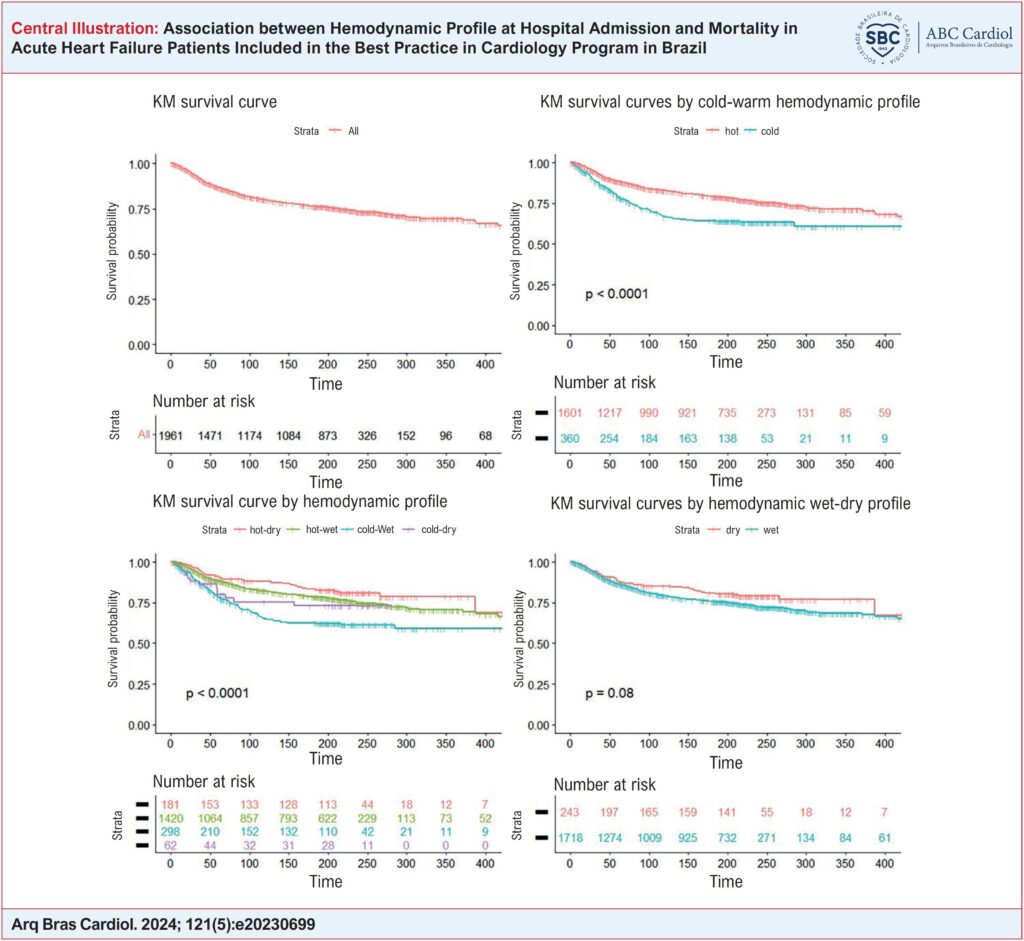Arq. Bras. Cardiol. 2024; 121(5): e20230699
Association between Hemodynamic Profile at Hospital Admission and Mortality in Acute Heart Failure Patients Included in the Best Practice in Cardiology Program in Brazil
This Original Article is referred by the Short Editorial "Importance of Clinical Examination in the Assessment of Hemodynamic Profiles and Their Relationship with Outcomes in Patients with Acute Heart Failure".
Abstract
Background:
Heart failure (HF) contributes to a high burden of hospitalization, and its form of presentation is associated with disease prognosis.
Objectives:
To describe the association of hemodynamic profile of acute HF patients at hospital admission, based on congestion (wet/dry) and perfusion (cold/warm), with mortality, hospital length of stay and risk of readmission.
Methods:
Cohort study, with patients participating in the “Best Practice in Cardiology” program, admitted for acute HF in Brazilian public hospitals between March 2016 and December 2019, with a six-month follow-up. Characteristics of the population and hemodynamic profile at admission were analyzed, in addition to survival analysis using Cox proportional hazard model for associations between hemodynamic profile at admission and mortality, and logistic regression for the risk of rehospitalization, using a statistical significance level of 5%.
Results:
A total of 1,978 patients were assessed, with mean age of 60.2 (±14.8) years and mean left ventricular ejection fraction of 39.8% (±17.3%). A high six-month mortality rate (22%) was observed, with an association of cold hemodynamic profiles with in-hospital mortality (HR=1.72, 95%CI 1.27-2.31; p < 0.001) and six-month mortality (HR= 1.61, 95%CI 1.29-2.02). Six-month rehospitalization rate was 22%, and higher among patients with wet profiles (OR 2.30; 95%CI 1.45-3.65; p < 0.001).
Conclusions:
Acute HF is associated with high mortality and rehospitalization rates. Patient hemodynamic profile at admission is a good prognostic marker of this condition.
Keywords: Heart failure; Hospitalization; Mortality
1,101

